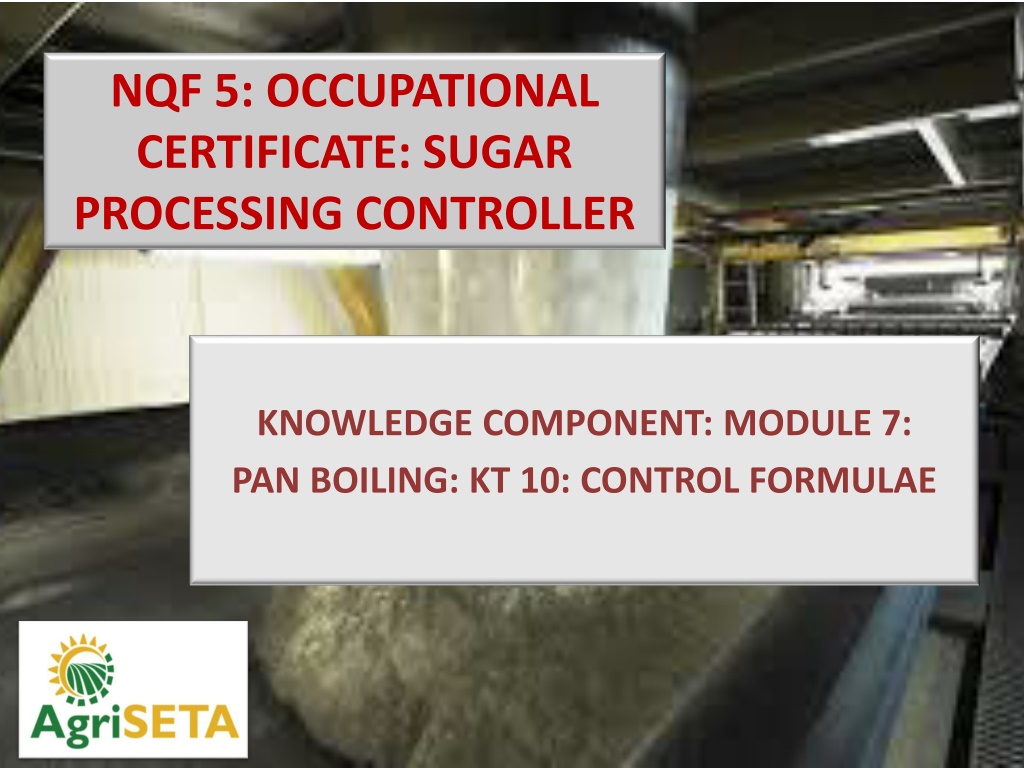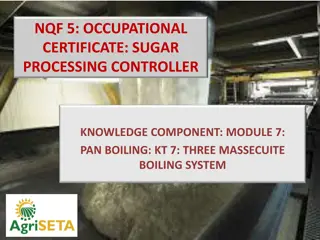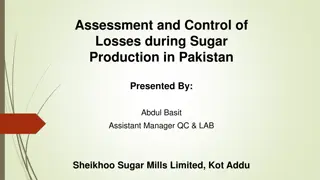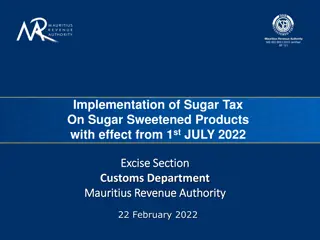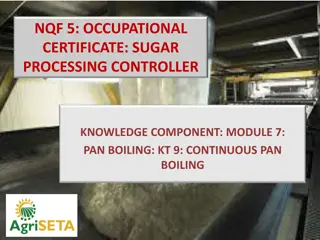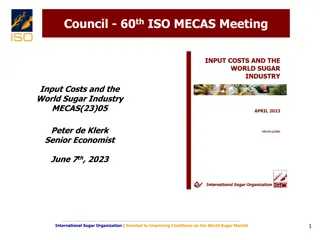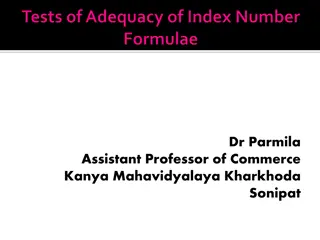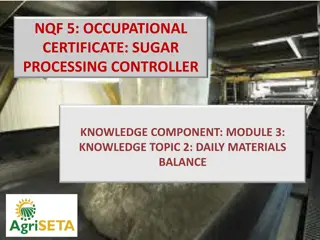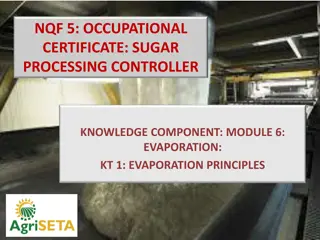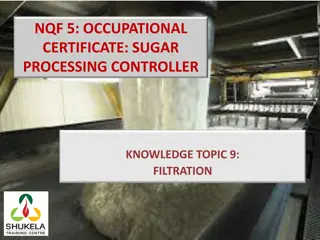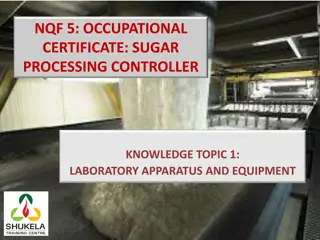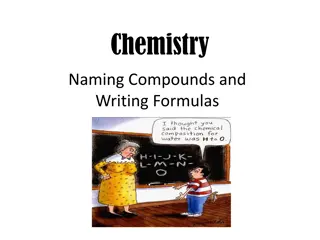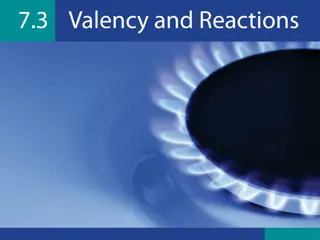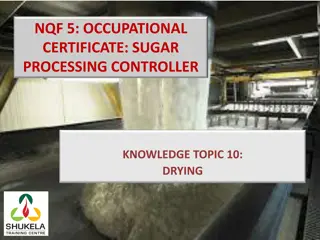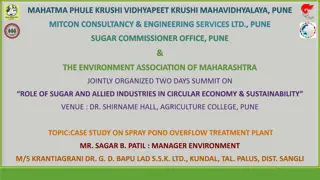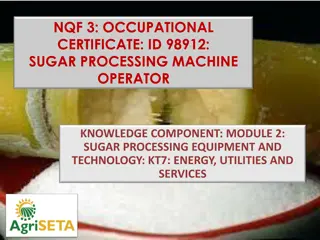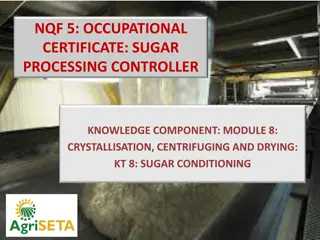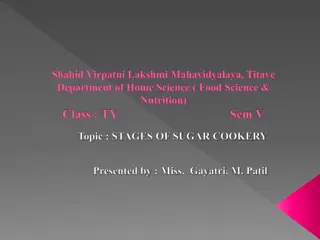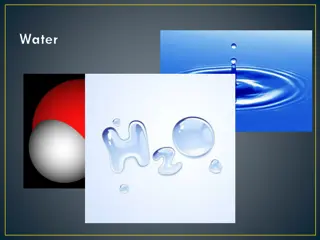Sugar Processing Control Formulas and Parameters
Explore the key concepts of crystal content, exhaustion, and the SJM formula in sugar processing control. Learn how to calculate crystal content, manage viscosity limitations, maximize sucrose recovery, and apply the SJM formula for sucrose recovery percentage. Understand the factors affecting exhaustion rates and how to optimize the performance of sugar processing controllers.
Download Presentation

Please find below an Image/Link to download the presentation.
The content on the website is provided AS IS for your information and personal use only. It may not be sold, licensed, or shared on other websites without obtaining consent from the author.If you encounter any issues during the download, it is possible that the publisher has removed the file from their server.
You are allowed to download the files provided on this website for personal or commercial use, subject to the condition that they are used lawfully. All files are the property of their respective owners.
The content on the website is provided AS IS for your information and personal use only. It may not be sold, licensed, or shared on other websites without obtaining consent from the author.
E N D
Presentation Transcript
NQF 5: OCCUPATIONAL CERTIFICATE: SUGAR PROCESSING CONTROLLER KNOWLEDGE COMPONENT: MODULE 7: PAN BOILING: KT 10: CONTROL FORMULAE
Crystal content of the Massecuite To control the operation of the pan floor and ensure maximum recovery of sucrose, we need to calculate certain performance parameters. Crystal content is the mass of crystals as a percentage of the mass of massecuite. It is obviously desirable to maximize the crystal content of a massecuite but there are certain factors that limit crystal content: Impurities Viscosity/handling The viscosity increases as the crystal content increases. The crystal content can thus not be too high or the massecuite cannot be handled in the factory.
Crystal content of the Massecuite (cont.) In the raw house impurities limit the crystal content, while in refineries the viscosity /handling limits the crystal content. In the raw house the crystal content is as follows: A-massecuite 55 B-massecuite 43 C-massecuite 30-35 In refineries the crystal content can be as high as 50%.
Exhaustion This gives the amount of crystals of sucrose recovered as a percentage compared to the amount of sucrose available. The normal exhaustions obtained in South African factories are: A-massecuite (typically 68% B-massecuite (typically 65%) C-massecuite (55 - 60%) The factor (purity massecuite purity molasses) or massecuite purity drop is important to exhaustion. In general, the greater the purity drop the better the exhaustion.
Exhaustion (cont.) Factors that affect exhaustion
SJM Formula This formula gives the % recovery of sucrose from a given feed, where sugar and molasses are made. It ignores all losses except to molasses.
SJM Formula (cont.) The SJM formula can be applied to all the following cases:
SJM Formula - Example Calculate the SJM recovery if the syrup purity is 85%, the sugar purity 99.5 % and the purity of the molasses is 35%. This means that 90.7% of the sucrose in syrup has been recovered in sugar.
